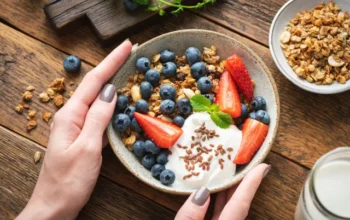Bananas are a staple in many households, loved for their sweet taste and convenience. However, they tend to turn brown quickly, which can be frustrating. Keeping bananas fresh involves understanding a bit of science and using some practical storage techniques. In this guide, we’ll explore why bananas turn brown and how to store them properly to maintain their freshness.
Why Do Bananas Turn Brown?
Bananas turn brown due to a natural ripening process involving ethylene gas. As bananas ripen, they produce more ethylene, which speeds up the browning process. This gas triggers enzymes that break down chlorophyll, the pigment responsible for the green color in bananas, leading to the yellow hue we associate with ripe bananas. When the breakdown continues, the bananas turn brown.
The Impact of Temperature on Banana Freshness

Temperature plays a crucial role in the ripening process. Bananas thrive at room temperature, ideally around 68-72°F (20-22°C). Storing them at higher temperatures speeds up ripening, while cooler temperatures slow it down. However, refrigeration can cause the peel to turn brown prematurely, although the fruit inside remains unaffected for a longer period.
Choosing the Right Bananas
To maximize freshness, start by choosing bananas wisely. Look for bananas that are firm and have a consistent yellow color with minimal brown spots. If you plan to consume them over several days, opt for a mix of ripe and slightly green bananas. This way, you can enjoy them at different stages of ripeness.
Proper Storage Techniques
Room Temperature Storage Keeping bananas at room temperature is one of the simplest methods. Place them on your kitchen counter away from direct sunlight. Using a banana hanger can help air circulate around the fruit, reducing the risk of bruising and premature browning.
Using a Banana Hanger A banana hanger is a practical tool that suspends the bananas in the air, allowing them to ripen evenly and minimizing contact with surfaces that can cause bruising.
Refrigeration Tips
Refrigerating bananas can be tricky. If you refrigerate them too early, the peel turns brown while the inside remains firm. The best time to refrigerate bananas is when they are fully ripe. This can extend their freshness for a few extra days. Remember, the peel may darken, but the fruit inside stays fresh and tasty.
Freezing Bananas

Freezing is an excellent option for preserving bananas, especially if you have more than you can consume before they spoil. Peel the bananas, cut them into slices, and place them in a single layer on a baking sheet. Once frozen, transfer the slices to a freezer-safe bag. Frozen bananas are perfect for smoothies, baking, or as a cool treat.
Using Lemon Juice to Prevent Browning
Lemon juice is a natural preservative that can help keep bananas from turning brown. The citric acid in lemon juice slows down the oxidation process. Brush a small amount of lemon juice on the banana’s flesh or slices to keep them fresh and visually appealing.
Wrapping Banana Stems
Another effective method is wrapping the stems of the bananas with plastic wrap or aluminum foil. This reduces the amount of ethylene gas released from the stem, slowing down the ripening process. Wrap each stem individually for best results.
Storing Bananas with Other Fruits
Bananas produce a significant amount of ethylene gas, which can speed up the ripening of other fruits nearby. To prevent this, store bananas separately from fruits like apples, avocados, and tomatoes. This helps maintain the freshness of all your produce.
Alternative Methods to Prevent Browning
Plastic Wrap Technique Wrapping the banana bunch with plastic wrap can also slow down the ripening process by trapping the ethylene gas at the stems. Ensure the wrap is tight and secure.
Using Vinegar A diluted vinegar solution can act as a preservative. Mix one part vinegar with three parts water and lightly brush it on banana slices. This method can alter the taste slightly, so use it sparingly.
Creative Storage Solutions
Banana Storage Containers Specialized banana storage containers are designed to minimize exposure to air and ethylene gas, keeping bananas fresher for longer. These containers are available in various designs and can be a handy addition to your kitchen.
DIY Storage Hacks Get creative with DIY solutions like hanging bananas from a coat hanger or using a mesh bag to allow air circulation while keeping the bananas contained. These hacks can be fun and effective.
Handling Overripe Bananas
Don’t throw away overripe bananas; they are perfect for baking! Use them in recipes like banana bread, muffins, or smoothies. Overripe bananas are sweeter and softer, making them ideal for these dishes.
Common Mistakes to Avoid
Avoid common mistakes like storing bananas in plastic bags, which can trap moisture and accelerate spoilage. Also, don’t refrigerate bananas that are not yet ripe, as this can cause uneven ripening and affect their texture and flavor.
Conclusion
Keeping bananas fresh and preventing them from turning brown involves a combination of proper selection, storage techniques, and understanding the ripening process. By applying these tips, you can enjoy your bananas at their best for a longer period. Experiment with different methods to find what works best for you and your household.
Can you store bananas in a paper bag?
Yes, storing bananas in a paper bag can speed up the ripening process due to the trapped ethylene gas. This is useful if you need to ripen green bananas quickly.
How long do bananas last in the fridge?
Ripe bananas can last in the fridge for about 5-7 days. The peel may turn brown, but the fruit inside remains fresh.
What is the best way to store bananas for smoothies?
Freeze banana slices by placing them in a single layer on a baking sheet. Once frozen, transfer them to a freezer-safe bag for convenient smoothie preparation.




